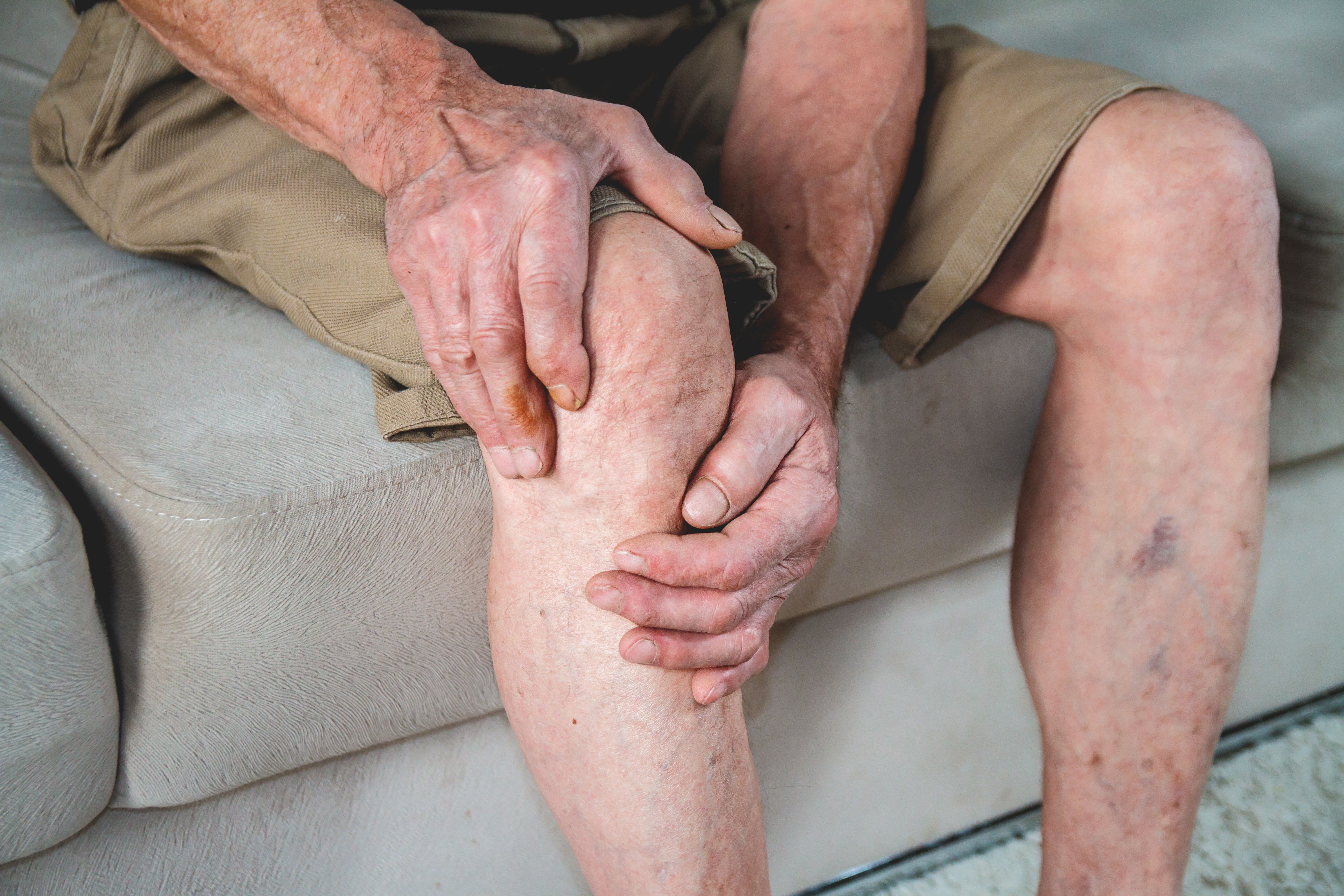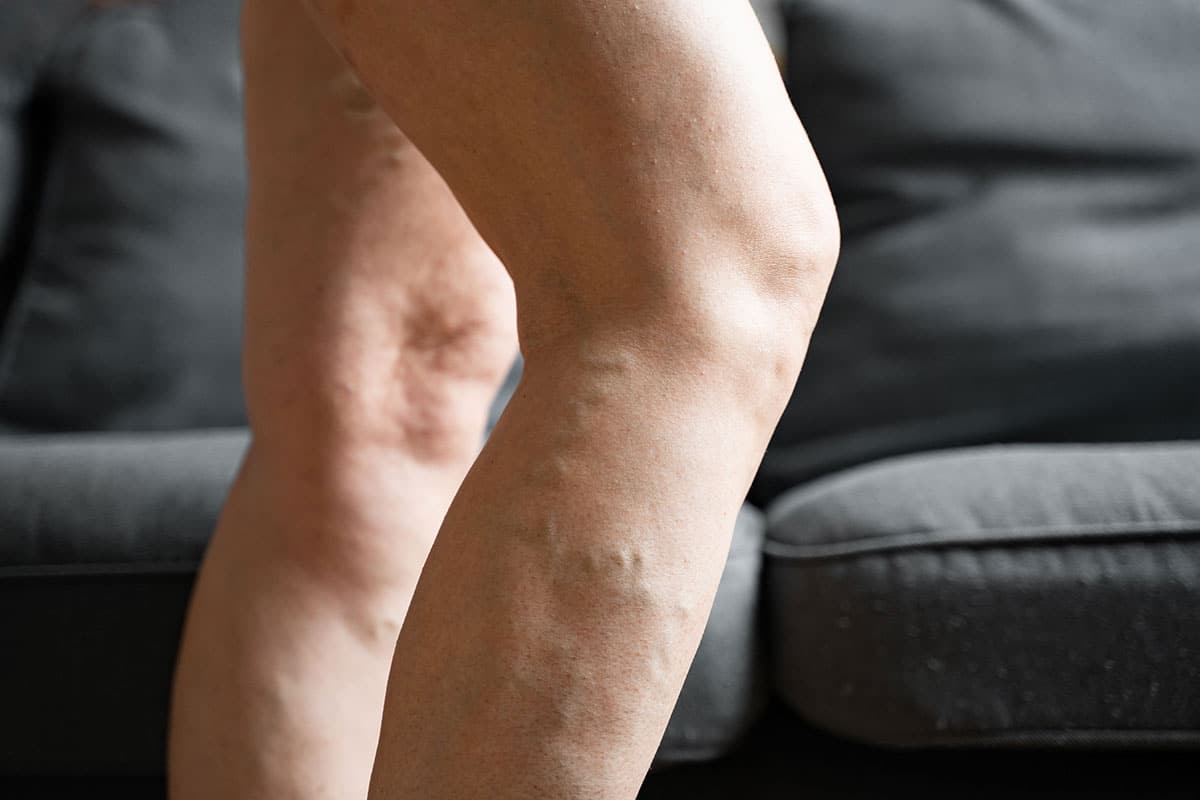Treatment of Chronic Venous Disease
Varicose Veins
Heavy, Painful & Swollen Legs
Causes of Chronic Venous Disease
5/2/2023
Men with Varicose Veins: Tips and Advice for a Common Venous Disease
What are Varicose Veins?
Varicose veins are a type of venous disease, characterized by the dilatation of the superficial venous system of the lower limbs, that commonly cause painful heavy legs.
Although varicose veins are typically associated with age and women, the disease represents one of the different ways that chronic venous insufficiency (CVI) can impact people and it has an important and men. Actually, it seems that the incidence of severe CVI is higher in men,1 and more men (39.7%) reported having CVI and varicose veins than women (32.2%) according to a 2003 study in Edinburgh.2
In this article we will explore the causes of varicose veins in men’s legs, if they are dangerous, and some tips to help prevent them.

What are the causes of varicose veins in men’s legs?
Varicose veins in men who are suffering from chronic venous disease typically occur as a result of alterations in the valves of the veins, either caused by injury, an increase in the caliber of the veins, or vasodilation.
The most common causes of CVD in men can be due to:
- Hereditary factors
- Age
- A diet with excess calories
- A sedentary lifestyle
- Standing or sitting for long hours due to working requirements
- Living with high temperatures that can cause vasodilation
- Smoking
It has been suggested that prolonged standing at work is associated with the development of diseases including varicose veins; therefore, if your profession requires you to stand or sit for long periods of time, it is important to take extreme caution and visit a doctor as soon as you start to feel the early signs of varicose veins such as swollen, painful, and heavy legs.
What do varicose veins in men look like?
Varicose veins in men can appear as bulging veins which develop in the lower legs, while other visual signs can include eczema (dry, itchy patches of skin), swelling, or a noticeable change in skin pigmentation. The condition can also be accompanied by any of the following symptoms:
- Heavy legs
- Edema
- Pain, itchiness
- Night cramps
- Varicose thrombosis
Varicose veins have blood pooled inside them, which explains why they can seem darker on appearance, dark blue or dark purple, and swollen.3
Are varicose veins dangerous?
Varicose veins can be harmless, but if left untreated they can also pose a serious problem to health. They are also very likely to happen in men, despite the belief that they are more common in women.4 As such, varicose veins in men can potentially be dangerous if we take into account the higher number of men that do not seek help until a disease has progressed.5 Varicose veins and chronic venous disease are progressive conditions that can lead to many more serious complications, such as:
- Deep vein thrombosis. A blood clot that forms in deeper veins in the legs and that can potentially be dangerous if it breaks loose and travels to the lungs.6
- Leg ulcers. Also known as venous ulcers. They tend to form near the ankle in the lower extremities when the blood flow doesn’t circulate as well as it should. Leg ulcers are difficult to heal and quite painful.7
Tips on how to prevent varicose veins in men
There are some that can have a positive impact on preventing the development of varicose veins in men.
These are some of the more common recommendations to prevent the development of chronic venous insufficiency in men.
- Exercise and move around as much as possible to improve blood flow. Avoid sitting or standing for long periods of time, shift positions and walk around often, and if you are sitting or standing for most of the day, make sure to try small exercises for the lower legs, such as calf raises.
- Give priority to a healthy diet and maintain a healthy weight.
- Quit smoking as it can worsen the blood circulation in your lower limbs8 together with many other serious health consequences.
- Use compression stockings. Using compression stockings is one of the standard treatments for the prevention of deep vein thrombosis and their use has been shown to significantly improve the venous return.9
- Visit your doctor regularly to double check which medications or treatments are more suited to your case. Ask them about oral medications such as venoactive drugs which can be very effective at striking at the root of the problem.
- Get familiar with venoactive treatments. One of the best solutions to help strengthen the tone of the veins and limit the progression of chronic venous insufficiency while relieving its common symptoms such as leg pain and swelling.10
As with any progressive disease, it is of the utmost importance to visit a specialist and to be informed of the causes, consequences, and tips to avoid its progression. Varicose veins can be affected by weather and altitude too, therefore we highly advise taking the disease seriously and proactively looking for ways to combat it.
We recommend you fill out our self-assessment test to find out your personal risk of suffering from chronic venous insufficiency.
REFERENCES
- Barstow C, Kassop D. Cardiovascular Disease: Chronic Venous Insufficiency and Varicose Veins. FP Essent. 2019 Apr;479:16-20.
- Lee AJ, Evans CJ, Allan PL, Ruckley CV, Fowkes FG. Lifestyle factors and the risk of varicose veins: Edinburgh Vein Study. J Clin Epidemiol. 2003 Feb;56(2):171-9.
- NCBI - Varicose veins: Overview. Retrieved September 20, 2022, from https://www.ncbi.nlm.nih.gov/books/NBK279247/
- Jawien, A; Grzela, T; Ochwat, A (2003). Prevalence of chronic venous insufficiency in men and women in Poland: multicentre cross-sectional study in 40,095 patients. Phlebology, 18(3), 110–122, from
https://journals.sagepub.com/doi/10.1258/026835503322381315
- Banks, I. (2001). No man's land: men, illness, and the NHS. BMJ, 323(7320), 1058–1060, from https://www.ncbi.nlm.nih.gov/pmc/articles/PMC1121551/
- Stone J, Hangge P, Albadawi H, Wallace A, Shamoun F, Knuttien MG, Naidu S, Oklu R. Deep vein thrombosis: pathogenesis, diagnosis, and medical management. Cardiovasc Diagn Ther. 2017 Dec;7(Suppl 3):S276-S284, from https://www.ncbi.nlm.nih.gov/pmc/articles/PMC5778510/
- NCBI - Venous Leg Ulcer. Retrieved September 20, 2022, from https://www.ncbi.nlm.nih.gov/books/NBK567802/
- Gourgou S, Dedieu F, Sancho-Garnier H. Lower limb venous insufficiency and tobacco smoking: a case-control study. Am J Epidemiol. 2002 Jun 1;155(11):1007-15, from https://pubmed.ncbi.nlm.nih.gov/12034579/
- Mota GR, Simim MAM, Dos Santos IA, Sasaki JE, Marocolo M. Effects of Wearing Compression Stockings on Exercise Performance and Associated Indicators: A Systematic Review. Open Access J Sports Med. 2020 Jan 22;11:29-42, from https://www.ncbi.nlm.nih.gov/pmc/articles/PMC6985982/
- Adapted from Nicolaides A, Kakkos S, Baekgaard N, et al. Management of chronic venous disorders of the lower limbs. Guidelines according to scientific evidence. Part I. Int Angiol. 2018;37(3):181-254.1
2026

